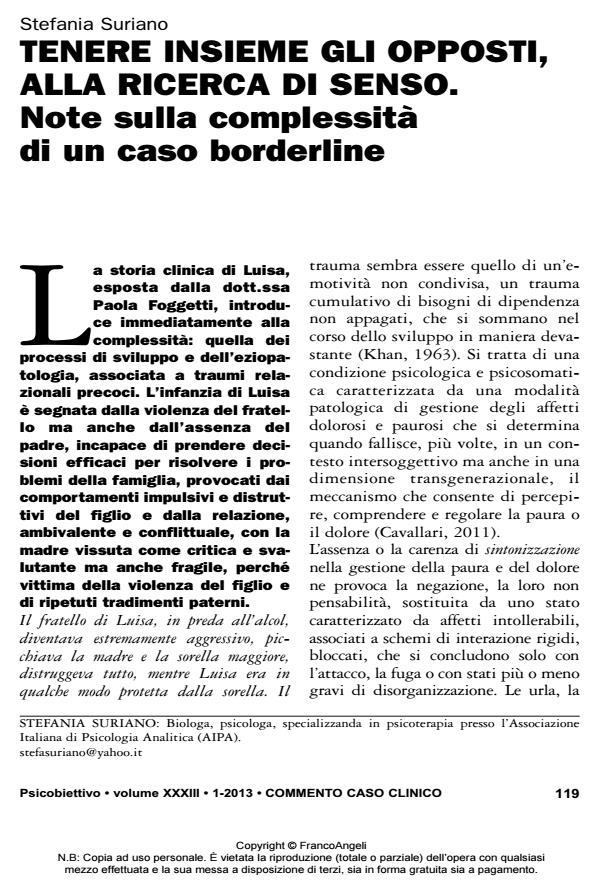Tenere insieme gli opposti, alla ricerca di senso. Note sulla complessità di un caso borderline
Titolo Rivista PSICOBIETTIVO
Autori/Curatori Stefania Suriano
Anno di pubblicazione 2013 Fascicolo 2013/1
Lingua Italiano Numero pagine 5 P. 119-123 Dimensione file 186 KB
DOI 10.3280/PSOB2013-001009
Il DOI è il codice a barre della proprietà intellettuale: per saperne di più
clicca qui
Qui sotto puoi vedere in anteprima la prima pagina di questo articolo.
Se questo articolo ti interessa, lo puoi acquistare (e scaricare in formato pdf) seguendo le facili indicazioni per acquistare il download credit. Acquista Download Credits per scaricare questo Articolo in formato PDF

FrancoAngeli è membro della Publishers International Linking Association, Inc (PILA)associazione indipendente e non profit per facilitare (attraverso i servizi tecnologici implementati da CrossRef.org) l’accesso degli studiosi ai contenuti digitali nelle pubblicazioni professionali e scientifiche
In questo lavoro viene proposta una rilettura del caso clinico di una paziente borderline dal punto di vista della psicologia analitica junghiana con riferimenti ad altri modelli psicodinamici. La grave sintomatologia della paziente, espressa nei momenti più critici con sintomi dissociativi, comportamenti impulsivi e acting out, sembra essere la rappresentazione di un corto circuito psichico, una forma di difesa di fronte a ripetuti e devastanti stati traumatici, identificabile come una condizione psicologica e psicosomatica caratterizzata dalla non pensabilità della paura e del dolore, che vengono negati, quando fallisce più volte anche a livello transgenerazionale il meccanismo che li percepisce, li controlla e li regola. L’espressione della sofferenza attraverso affetti archetipici esplosivi e indifferenziati è trasformata dalla terapia in sentimenti, che comunicano gli stati interiori del sé agli altri e consentono di accedere ad una dimensione di cambiamento e di sviluppo.
Parole chiave:Borderline; trauma cumulativo; complesso; madre; suicidio; dissociazione.
Stefania Suriano, Tenere insieme gli opposti, alla ricerca di senso. Note sulla complessità di un caso borderline in "PSICOBIETTIVO" 1/2013, pp 119-123, DOI: 10.3280/PSOB2013-001009